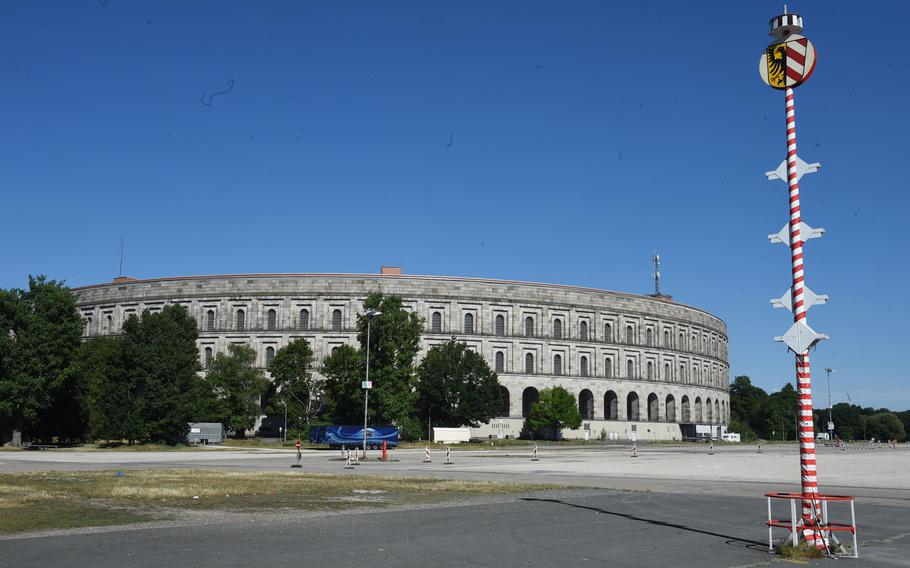
The Documentation Center in Nuremberg, which houses a museum of the Nazi Party Rally Grounds nearby. It is located inside the unfinished remains of the Congress Hall of Nazi Party rallies. (Martin Egnash/Stars and Stripes)
Just outside of the city center in Nuremberg, massive stone structures loom ominously over an idyllic park.
This is where hundreds of thousands of Nazi Party supporters gathered between 1933 and 1938 in what were known as the Nuremberg Rallies.
The Nazi Party held yearly rallies in Nuremberg to celebrate their elevation to power and the end of the democratic Weimar Republic, which preceded the Third Reich.
This is where evil found some of its largest audiences, while Hitler repeatedly violated the treaty that ended World War I and the West appeased Hitler’s advances into other countries in the name of preventing another war — at least for a little while.
If you’ve ever seen images showing Hitler observing a living sea of people beneath waving swastikas, they were likely at one of these rallies.
The Documentation Center and Nazi Party Rally Grounds in Nuremberg allows visitors to explore these structures and learn about the events held here.
The location is divided into the Documentation Center Museum and the rally grounds. The museum is housed in the unfinished remains of the Nazi Party rally congress hall.
The museum looks like the Colosseum in Rome, and not by accident. Hitler’s lead architect, Albert Speer, used authoritarian influences from Imperial Rome in its design.
The museum’s permanent exhibition, “Fascination and Terror,” teaches visitors about the rise, connections and murderous consequences of Nazism in Germany.
As an American who grew up with the History Channel, I thought I knew all about Nazi Germany. But I actually learned quite a bit through its exhibits.
Most Americans who are interested in history know something about World War II. The battles, strategies and equipment are shown in numerous movies and video games. However, I think Americans are a little less informed about the very beginnings of fascism in Germany, which is a large part of this museum.
One of the first exhibits shows the devastated German economy after WWI, with pictures of worthless 100,000 German mark notes littering the ground.
The exhibits then move on to the rise of Hitler and the brutal political machinations of its early years. Much of the museum relies on large, high-quality pictures, but there are also objects like Hitler-themed stained-glass windows and signs from concentration camps.
The museum comes with a very informative audio guide, so you don’t need to be able to read German to go through it.
When you’re done, the actual rally grounds are just a short walk behind the congress hall on Zeppelin Field. The grounds have since been turned into a park and racetrack, but the actual structures remain.
The viewing area, where Hitler and his henchmen looked on approvingly at the fanatical nationalist devotion unfolding before them, is probably the most striking part of the disturbing experience.
You can climb up the steps and even stand in Hitler’s viewing area. It is deeply unsettling, but it’s an important part of history.
egnash.martin@stripes.com Twitter: @Marty_Stripes
DIRECTIONS: Address: Bayernstrasse 110, 90478 Nuremberg
TIMES: 9 a.m. to 6 p.m. weekdays; 10 a.m. to 6 p.m. weekends
COSTS: 6 euros per adult, 1.50 reduced price for students